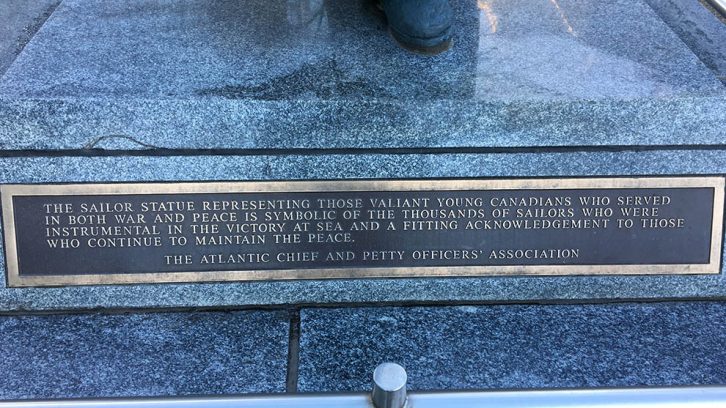Navy
The Sailor statue carries on legacy of retired navy veterans, after group disbands
New ownership of Halifax statue marks end of an era for Atlantic navy vets

caption
Halifax regional council voted unanimously on Tuesday to take over ownership of ‘The Sailor” statue, located at 1655 Lower Water Street, near the Maritime Museum of the Atlantic.A group of retired petty officers and chiefs who spent 30 years preserving the heritage and history of Canada’s navy has disbanded, but not without one final gesture.
The Atlantic Chiefs and Petty Officers Association consisted mostly of retired members of the Royal Canadian Navy, and was inaugurated in 1988. They contributed to many causes, including helping save Halifax music venue The Carleton, when it was slated for demolition in 1992. They ceased operations on Dec. 31, citing low membership and attrition as root causes.
But they leave behind a lasting legacy: a statue.
The Sailor was erected in 1991, at an estimated cost of $300,000, without the use of public funds. Now the association has handed it over to the Halifax Regional Municipality, who will be responsible for its preservation.
The Sailor’s significance
J. Gaylord Kingston served as the association’s president for more than 20 years. He began a career with the Royal Canadian Navy in 1953 and served as a gunnery armour, meaning he prepared, repaired and maintained guns, but never saw combat.
“When I joined in ’53, the Koreans heard I was coming, so they quit,” said Kingston with a grin.
He said The Sailor is the most significant symbol of the organization and is very pleased the HRM has taken over ownership.
“The statue represents going to sea and a devotion to duty,” said Kingston. “The thing about The Sailor is that it is self-maintaining. The weather takes care of him. He’s bronze, he’s not going to rust, he’s not going to fall apart. He’s solid.”

caption
Text found at the base of the statue honours Canadian veterans.Coun. Waye Mason helped arrange the transfer of ownership.
“The statue is a fitting tribute, to the sailor and the love for the sea, seen by residents and the millions of visitors and tourists who visit our great city,” reads a letter that Mason wrote to the association president.
From Halifax to Londonderry
The statue also had a global influence, inspiring a replica statue in Londonderry, Ireland. The main difference between the two is that the statue in Halifax depicts a cheerful sailor headed to sea, while Londonderry’s has a grizzled man returning home.
Kingston said the decision to end the association was difficult.
“We had gone down from 1,400 strong in the early ’90’s, to less than 400 across the country,” he said.
As of 2011, the Royal Canadian Navy consists of 8,500 regular and 5,100 reserve sailors, as well as 5,300 civilian personnel.
Modern times and a new navy
Kingston said modern technology and culture changes were main factors in the group’s inability to secure new members.
“We were the wavy navy. We were paid less, but made our own fun. Now, the new navy as we call it, doesn’t have much interest in tradition or history,” said Kingston.


m
michael Hodgson Cdr (Ret'd)
d
dave cain
J
J. Gaylord Kingston
B
Benjamin Wilson
J
Jane Sangster
P
Peter Sellar
M
Michael Young